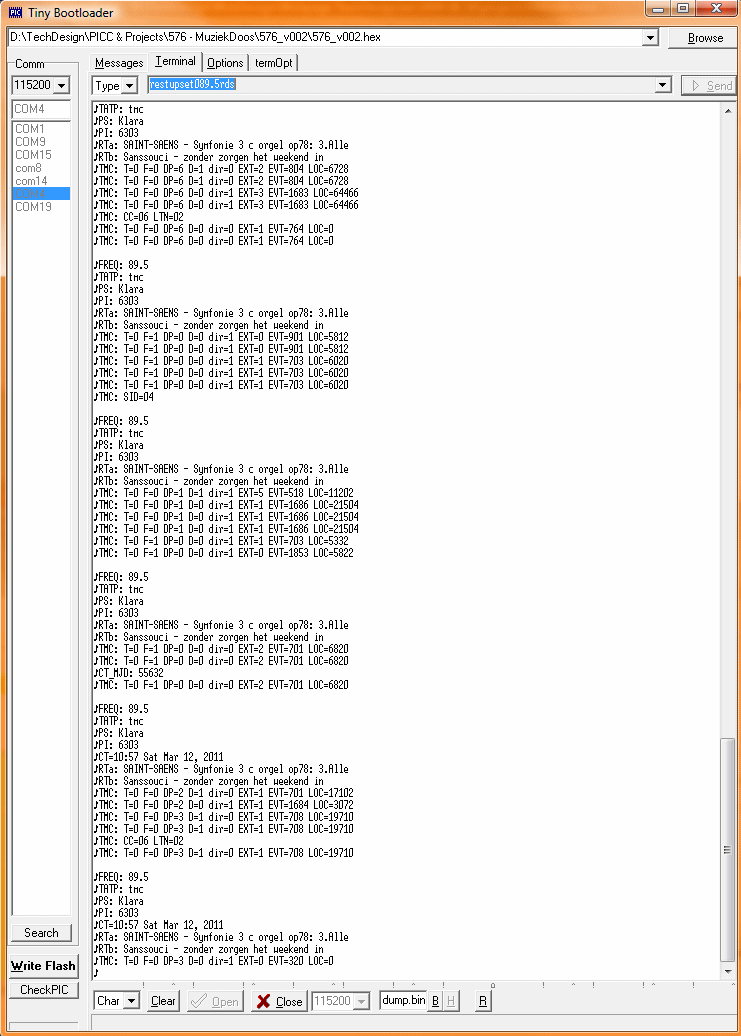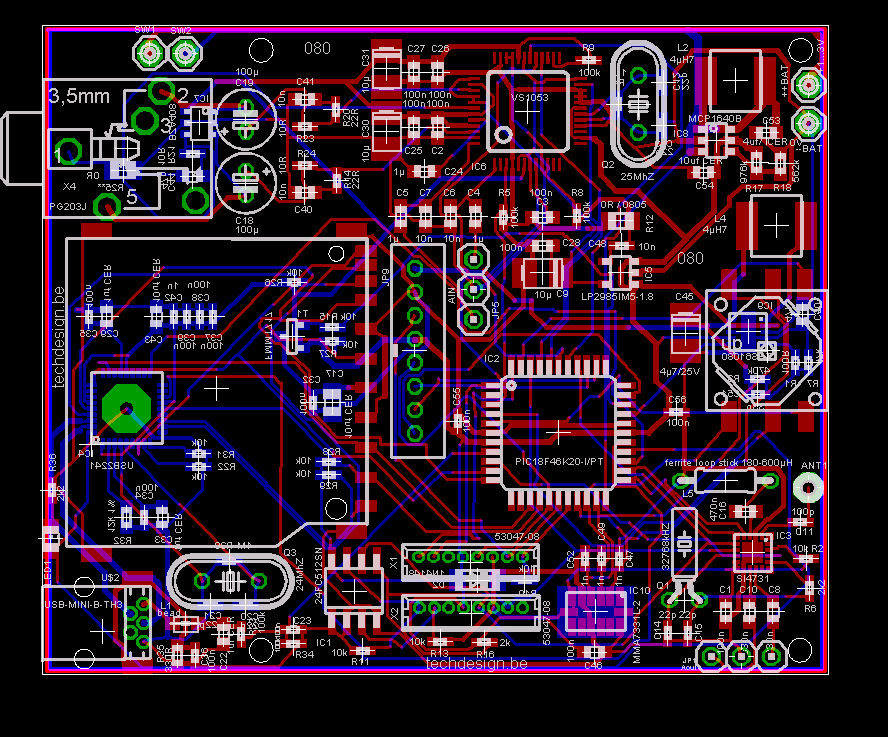KIT1 with OLED module running.
FM RDS Tuner Module for mobile applications.
- Stereo FM band receiver with RDS decoding for mobile applications.
- Continuous full RDS data output through RS232: RDS PS, PI, TA/TP/TMC, CT, TMC.
- Full Radio Text supported: 2x64 characters.
- Raw TMC data output.
- Low power operation with two AA (HR6) 1V2 Ni-Mh batteries or power supply.
- Power input range is +2.4V ... +3.0V, 50..60mA without OLED and 80..90mA with OLED.
- Runs on a PIC18F46K20 at 16 MhZ.
- Full user control (volume, tune, save preset) with a 5-way micro joystick.
- Module works as stand-alone without OLED as well.
- Optional OLED Module 1 with RGB OLED 96x64 pixels shows PS (station name), frequency, TA/TP/TMC, PI, mono/stereo, RT (2 alternating lines of radio text)
- Serial interface control so the module may be used as a stand-alone module.
- Analog line stereo output.
- Antenna connection, suggest use of a 30cm -> 2m wire.
- Assembled and fully tested KIT1 now available.
- Project source code can be purchased separately.
Schematic & pcb (Eagle 4.11e), hex file available. Module Software Updated on March 12, 2011.


